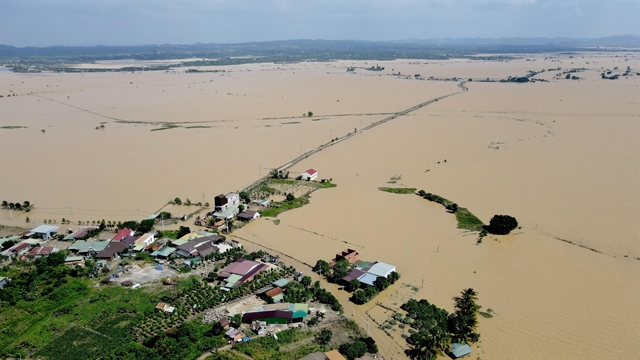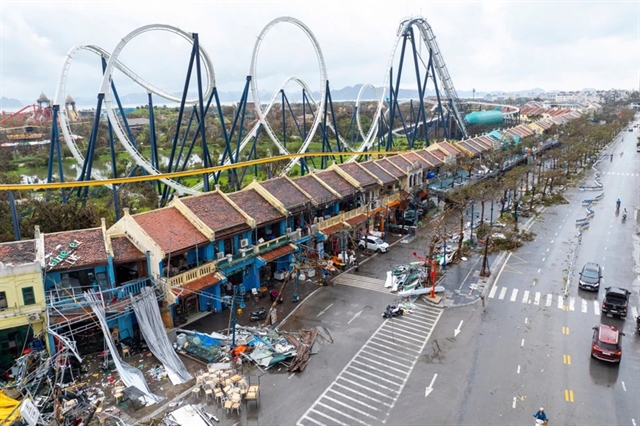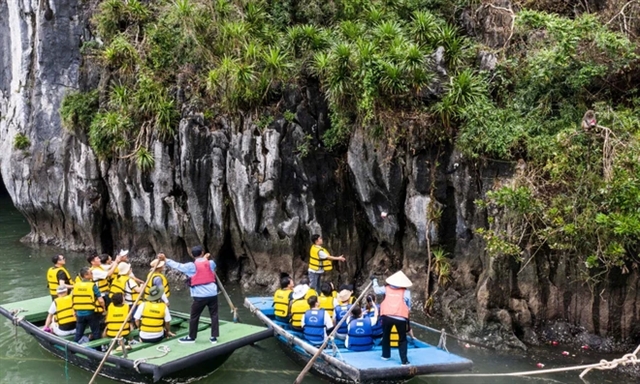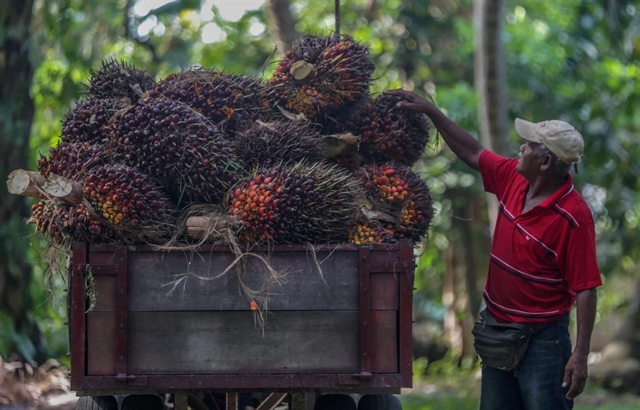 Society
Society

 |
| Hạ Long was devastated by Typhoon Yagi. VNA/VNS Photo |
Minh Hiếu
HẠ LONG — On a late September day, it seemed like Hạ Long City (Quảng Ninh Province) has returned to its normal rhythm after the devastation caused by Typhoon Yagi.
Nobody would have recognised the northern coastal city, home to the world-renowned Hạ Long Bay, that just two weeks earlier was in ruins and severely damaged by the destructive power of nature.
Among the hardest-hit areas by Yagi, Hạ Long had hundreds of houses destroyed, thousands of trees uprooted, roads cut off and infrastructure heavily damaged. The typhoon plunged the city into days without electricity and water, and with nearly paralysed telecommunications.
Immediately after the storm subsided and the water receded, the local government and residents of Hạ Long launched emergency relief efforts and began working to recover from the disaster as quickly as possible.
Chairman of Hạ Long City People’s Committee Nguyễn Tiến Dũng remarked that with a :"Lightning-fast, round-the-clock and storm-beating" spirit, the city launched a seven-day campaign to recover from the impacts of Yagi right after it made landfall here on September 9.
Officials, citizens and local forces worked tirelessly, day and night, to clean up and repair the damage caused by the storm. Efforts focused on clearing fallen trees, repairing damaged buildings and cleaning up the environment to restore normal life and reopen the city’s tourism, services and businesses.
In Bãi Cháy Ward, Nguyễn Thanh Tùng, Chairman of the People’s Committee, said that upon receiving directives from the city, the ward set up four task forces, with leaders directly overseeing recovery efforts on-site.
They focused on ensuring environmental hygiene, traffic safety and preventing flooding and landslides. The ward also created 25 volunteer groups to help minimise damage to public and private property.
“After the storm, all of the ward’s officials, along with the local militia, veterans, and women’s associations, were mobilised to assist with street clean-ups and environmental hygiene. During the seven-day campaign, officials worked tirelessly from 6am to midnight every day to restore the streets to their clean and beautiful condition,” Tùng said.
Throughout the campaign, familiar scenes of residents working together with local authorities to clean up the aftermath of the storm could be seen across the city. Fallen trees, debris and rubbish were cleared, while damaged homes and belongings were cleaned up, reflecting a strong sense of community solidarity.
Bùi Thị Quỳnh, a resident in Bãi Cháy Ward, said that the storm had knocked down many trees, leaving streets covered in mud and waste.
“We were saddened to see the widespread damage to the trees. As a result, the villagers banded together to clean up, replace trees and clear drains to deal with the storm’s aftermath,” Quỳnh said.
Despite progress, there were still challenges in some areas, particularly where power had not yet been restored, limiting the availability of machinery to clear debris in more difficult terrains.
Chairman of the Hạ Long City Business Association, Nguyễn Thanh Cảnh, said that following the city’s directives, large and small businesses in the area had provided over 200 trucks and 100 excavators to clear fallen trees and debris from beaches, free of charge, for 33 wards and communes of Hạ Long.
“Even though businesses suffered significant losses due to the storm, they still came together to support the community with thousands of free meals, dozens of water filtration machines, roof repair assistance and direct cash donations, totalling more than VNĐ400 million (US$16,000),” Cảnh added.
In addition to rescue and clean-up efforts, utilities like electricity, water and telecommunications were restored as quickly as possible, with workers operating around the clock to ensure essential services for residents were reinstated.
 |
| Hạ Long quickly welcomes visitors again after recovering from Typhoon Yagi. — VNA/VNS Photo |
Reviving a world heritage region
From a city in ruins, Hạ Long has largely been restored to its previous cleanliness and beauty. According to the Hạ Long People’s Committee, within seven days, nearly 65,000 people had been mobilised to help with the recovery efforts, with over 1,000 vehicles and 922 chainsaws deployed for cutting trees. Close to 600 volunteer groups in the villages and neighbourhoods, involving thousands of participants, contributed to the clean-up and recovery from the storm.
Now, 100 per cent of the city’s streets and neighbourhoods have been cleared, over 50,000 cu.m of waste have been collected, more than 80 per cent of fallen trees have been replanted, and over 70 per cent of electricity has been restored. Additionally, 100 per cent of roads are now passable and all schools and hospitals have resumed safe operations. Tourism, services and business activities are gradually returning to normal.
While the city has not yet fully returned to its pre-storm condition, the rapid recovery has left residents and visitors with positive impressions of the city’s resilient spirit.
Je Dong-Sun, a tourist from South Korea, was quoted as saying: “We heard about the storm’s destruction, but by the time we arrived, the recovery was already well underway. The hotel was still able to offer a good stay. I look forward to returning to see the city even more beautiful and green.”
Although significant progress has been made, much work remains to be done. The local government, businesses and residents are all committed to restoring the city to its former green, clean and beautiful state.
Secretary of the Hạ Long City Party Committee, Vũ Quyết Tiến said that after the seven-day campaign, the city would continue to mobilise all available resources to clean up residential areas, launch a campaign to clean Hạ Long Bay and beautify the urban environment. The city also plans to plant trees, flowers and sustainable urban spaces as part of its vision to build a 'City of Flowers' and a 'City of Festivals'.
With the motto 'No one will be left without a home, and no one will be left behind', Hạ Long is quickly implementing support policies to help residents recover from the storm.
To date, the city has provided VNĐ14 billion ($569,000) in emergency aid to 33 wards and communes for storm recovery efforts. Additionally, the city is offering support to families who lost loved ones or suffered significant damage, particularly those who had to evacuate.
Hạ Long is also improving urban management, resource protection and environmental conservation, addressing issues that surfaced in the aftermath of the storm. The city will explore new regulations for urban planning and construction standards, especially for coastal areas and propose guidelines for choosing suitable plant species for coastal environments and standards for offshore industries.
With determination, resilience and the unity of the local government, businesses, and people, Hạ Long City is poised to rebuild itself into an even more beautiful, modern and prosperous city. — VNS




